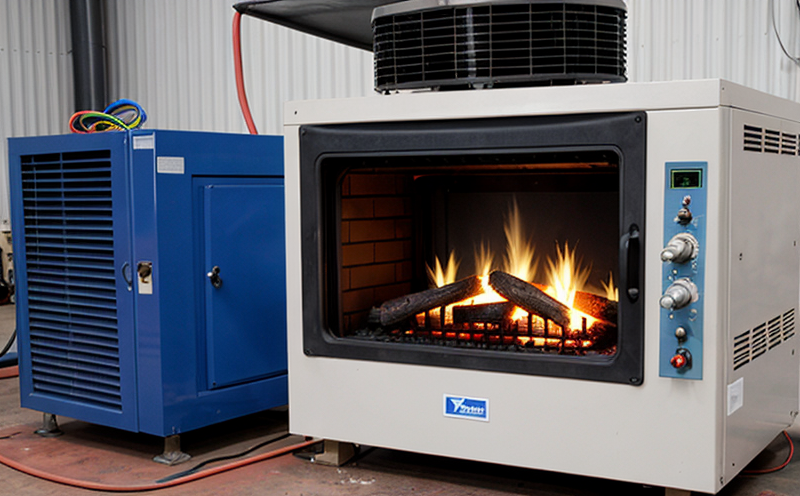ISO 75 Heat Deflection Temperature Thermal Testing of Lighting Components
The ISO 75 standard specifies a method for determining the heat deflection temperature (HDT) of plastic materials, which is crucial in assessing the thermal stability and durability of lighting components. This test plays an integral role in ensuring that lighting fixtures are reliable and can withstand environmental conditions without degrading over time.
Heat deflection temperature testing evaluates how a material behaves under load when exposed to heat. In the context of LED lights, this is particularly important as these components must endure high temperatures during normal operation while maintaining their structural integrity. The HDT indicates the point at which a sample starts to lose its mechanical properties due to increased temperature and force.
The process involves subjecting a specimen to progressively higher temperatures while applying load until it reaches a specified deflection value, typically 0.25 mm or 1.8 mm depending on the test method chosen (ISO 75-1 and ISO 75-2 respectively). The temperature at which this occurs is recorded as the HDT.
Understanding the HDT of your lighting components helps in optimizing their design for better performance under various operating conditions. For instance, selecting materials with higher HDT values ensures longer service life and reduced maintenance costs. This test also aids in compliance with regulatory requirements such as those set by UL or IEC standards.
Our state-of-the-art facilities offer comprehensive ISO 75 testing services tailored specifically for the lighting industry. By leveraging advanced equipment, experienced technicians, and strict adherence to international norms like ISO 75, we provide accurate results that contribute significantly towards product development and quality assurance efforts.
Scope and Methodology
| Step | Description | Details |
|---|---|---|
| Sample Preparation | Clean and dry the specimens to ensure accurate measurements. | Materials should be free from surface contamination that could affect results. |
| Clamping Specimen | Securely attach the specimen onto the test fixture ensuring it aligns correctly with the heating element. | The setup must prevent any misalignment or slippage during testing. |
| Heating and Testing | Gradually increase temperature while applying a specified load until deflection reaches 0.25 mm (ISO 75-1) or 1.8 mm (ISO 75-2). | The heating rate should be controlled to avoid sudden changes that might impact the outcome. |
| Data Recording | Record the temperature at which the specimen begins to deflect beyond specified limits. | This data is critical for interpreting results accurately. |
The testing procedure described above ensures that each sample undergoes consistent and precise evaluation, leading to reliable HDT values. Our laboratory adheres strictly to these steps to deliver accurate test results consistently.
Why Choose This Test
- Ensures Material Quality: Identifies weak points in the material that could lead to early failures.
- Aids Design Optimization: Helps engineers choose appropriate materials for their specific needs, enhancing overall product performance.
- Enhances Reliability: Guarantees that lighting components will remain functional even under harsh environmental conditions.
- Promotes Compliance: Ensures products meet necessary standards and regulations set by organizations such as IEC or UL.
- Saves Costs: By identifying potential issues early in the design phase, unnecessary rework is minimized.
- Increases Safety: Reduces risks associated with faulty lighting fixtures that could pose hazards to users.
The ISO 75 test is a cornerstone of quality assurance programs across numerous industries. For lighting manufacturers and suppliers alike, it provides essential information about the thermal behavior of their products, enabling informed decisions regarding material selection and process improvements.
International Acceptance and Recognition
The ISO 75 standard is widely accepted globally due to its robust methodology and consistent results. Many countries have adopted this standard as a benchmark for evaluating plastic materials used in various applications, including lighting components. Organizations like the International Electrotechnical Commission (IEC) and Underwriters Laboratories (UL) reference or mandate compliance with ISO 75 standards.
Compliance with these international standards not only enhances brand reputation but also opens up markets internationally by satisfying regulatory requirements. Customers trust brands that demonstrate adherence to recognized testing protocols, thereby fostering confidence in the quality and reliability of products.





